David Haviland left the United States in 1842 to set up his factory in Limoges, France and since, the name Haviland has been synonymous with excellence in the field of Limoges porcelain. Haviland is at the forefront of the porcelain world for over one and a half centuries.
The noblest of world Courts, the important Heads of State cannot resist the lure of Haviland porcelain. In the United States, Presidents Lincoln, Grant, Hayes, Roosevelt have commissioned Haviland designs. Quantity 400nyc ~ 1600la
The sharp points of eating knives were rounded off in 1669 in France by Cardinal Richelieu, who was offended by guests using them to pick their teeth. Blunt-tipped table knives were used like a flat spoon to carry food to the mouth until late in the nineteenth century, when the arbiters of etiquette deemed this practice as gauche.
Spoons in the Middle Ages were primarily of wood and horn. The earliest record of
an English silver spoon is a will dated 1259. Thereafter silver spoons were noted increasingly commonly in royal inventories and in the wills of the wealthy.
The fork was accepted begrudgingly at first, its use being regarded as effeminate by some. One observer regarded it as ‘coarse and ungraceful to throw food into the mouth as you would toss hay into a barn with a pitchfork.’ Quantity 226la
The orgin, appearance, and use of the knife rest is not chronicled in dining and eating history as are the knife, fork, spoon, and other dining tools.
Knife rests appeared on the dining table during England’s early Georgian era with the increased importance of fine dining. During England’s prosperous times, the wealthy class were able to copy the customs of nobility and the gentry.
The French were particularly good at producing knife rests called “porte couteau” via Lalique, Christofle, and O.Gallia. Knife rests are still used in well-established European homes.
Guilloché is an engraving technique in which a precise intricate repetitive pattern or design is mechanically etched into an underlying material with very fine detail. Specifically, it involves a technique of engine turning, called guilloché after the French engineer “Guillot”, who invented a machine “that could scratch fine patterns and designs on metallic surfaces”.
These enameled demitasse spoons come in various colors and designs. Small Masterpiece has collected a sampling of various Norwegian designers, J. Tostrup, Theodor Olsens, David Andersen, Aksel Holmsen, Ottar Hval, and N. M. Thune.Quantity 40la
The napkin ring is a bourgeois invention. The first examples were probably plain or embroidered tapes created by the housewife to personalise the family’s napkins between weekly wash-days.
Napkin rings in silver were the result of the growing wealth of the middleclass.
The observations below indicate that silver napkin rings started in France about 1800. By 1840 they had spread to most western countries.
In the 19th century the dinner table was the centre of social events and where the family exhibited its wealth. The quality and quantity of a family’s table silver was a direct measure of its success. The small personal napkin ring in silver became a favourite present at christenings, weddings and silver weddings. Quantity 280la
...................................................................................................
For more information, please contact Jason at [ 323 ] 633 ~ 8800
Instagram @Smallmasterpiece
|
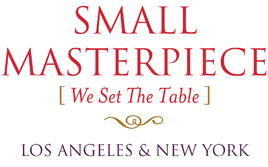

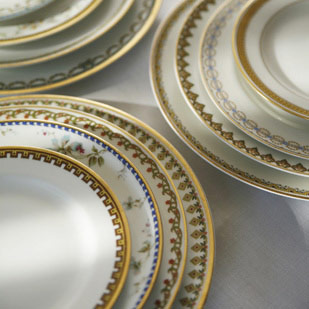 Haviland Limoges Porcelain
Haviland Limoges Porcelain Sterling Silver/Coin Silver Flatware
Sterling Silver/Coin Silver Flatware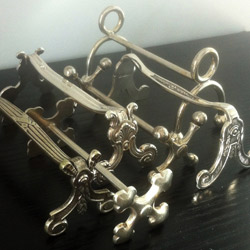 Christofle Knife Rests
Christofle Knife Rests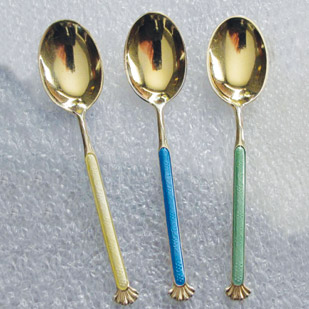 Norway Sterling Silver Gold Washed Enamel Guilloché Demitasse Spoons
Norway Sterling Silver Gold Washed Enamel Guilloché Demitasse Spoons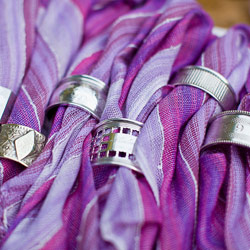 Sterling Silver/Plated Napkin Rings
Sterling Silver/Plated Napkin Rings